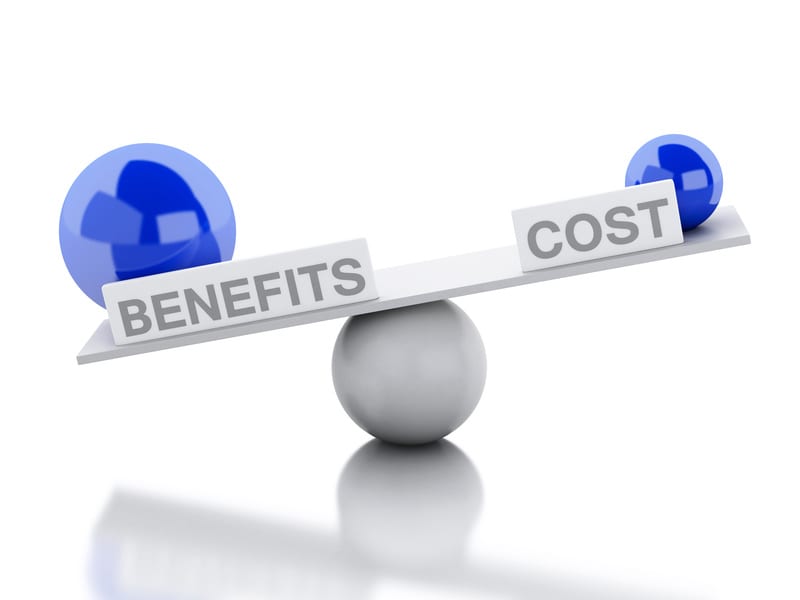 Last blog, we talked about the value of delivering insight and how it needs to be tailored to the specific client you are working with.
Last blog, we talked about the value of delivering insight and how it needs to be tailored to the specific client you are working with.
The best of all outcomes are achieved when you, as a serving professional, actually co-create insight that applies to a specific person within the client. It applies to that person and what they are working to achieve. It applies to that specific person and where they are in the client decision-making process and the progression of that process. This personalization is the most powerful connection that you will make at a client.
Think about the person you work with in a client-company. This person has specific needs and objectives that are unique to them. You have the opportunity to help them in ways that go beyond the overall business aims of their company. How can you help them do their job better? What constraints are pushing on them personally? What obstacles can you help remove? Can you help them meet deadlines? What information can you provide that impacts this person, not just this company?
This connection came to a clear understanding when calling on “Jim”, an engineer at a medical device client that we had been serving for years. Jim was a young father of 3 with his oldest son just turning 10. In this case, Jim was involved in the software creation of a new medical device that was due to market in the next few months. He had used our products and software tools to develop their end-products on many occasions. This time out the pressure to get the product to market was particularly high.
Added to the work pressure was the fact that Jim had just volunteered to coach his son’s soccer team. And that was a BIG community involvement in this case. We listened carefully to the conflicting needs for him to push to work overtime AND at the same time to coach his son’s soccer team. Our team had multiple solutions. We arranged for an outside consultant to assist in the project. We also coordinated our own technical experts locally and from the factory across the continent to help create the framework for the software and provided key sections of pre-written software code to address some of the special functions needed. We assisted further by helping with the quality assurance and compliance testing needed to get this medical device to market perfectly. On the personal side we were able to reach out internationally and connect Jim with a youth coaching expert that one of our European team members knew well.
In this case we delivered highly personalized insight and solutions that helped our client meet his corporate mandate and see through his personal commitment to his son. That’s how you work with your client to truly make a difference.
Insight is good. Personalized insight is invaluable.
 For the last 30 years or so in the semiconductor industry we have sold a concept that might just have been wrong! This is a mindset shift that we can make now and that could easily have been of great positive impact had we recognized it much earlier. And this shift in thinking that I will propose could easily apply to any number of industries and market places.
For the last 30 years or so in the semiconductor industry we have sold a concept that might just have been wrong! This is a mindset shift that we can make now and that could easily have been of great positive impact had we recognized it much earlier. And this shift in thinking that I will propose could easily apply to any number of industries and market places.
As always with shifts in thinking, not everyone will understand the differences, or choose to accept them, and that is quite OK. And those that do (you) will benefit from the shift in methodology that this shift in mindset sets up.
So what is this epiphany?
In our past, we have worked to make sure our clients were fully informed and understood the TRUE Total Cost of Ownership. Total Cost of Ownership discussions required us to put negative facts on the table that the people we were working with may or may not have actually taken time to include in their analysis of the choices they had made. Most of the time, as sellers of the “preferred” solution, we detailed a specific, unrecognized, significant cost factor that raised the costs of the “other” solution when factored in.
In the case of the semiconductor industry, in the early days of the concept of “field programmability” we pitted our “flexible” solutions against the non-flexible offerings of what were called mask programmable solutions. The true cost of ownership of a mask programmable solution actually included many elements that were not normally included in the price comparison at a piece by piece level. There were up front manufacturing costs in the “other” solutions that would be thousands of dollars, there could be the scrap costs as many times these less flexible solutions needed changes to finally function. It was really an easy conversation to have.
And in actuality, it probably was NOT wrong for its time. Those were different times, and we were selling an education, not just products in these cases.
That was then, however, and the same old thinking will NOT get us where we need to go today. Talking just about cost is the same as talking just about price. We need a different perspective – a differentiated perspective if you will.
So, no more Total Cost of Ownership.
Its time to change the words, that will change the thinking, that will change the actions, and get the results we want.
So instead, we need to talk about Total Benefit of Ownership.
A minor shift in words and a huge shift in thinking, discussion, and action.
If Total Benefit of Ownership is BETTER, BEST is Total Profits Added.
You can easily imagine the 2-way conversations that you will now have with a client when you start to position your answers to their needs in terms of the benefits that can be achieved by the client when they execute on the ideas that you CO-CREATE with them.
That focus on achievement outcome from a positive perspective is only made more powerful when you, together, take the time to specifically spell out how the impact that actions taken in the directions created by you and your client will actually generate ADDED PROFIT of $$XXX. Not just revenue, but bottom line profit. Having that level of discussion and spelling it all out at that detail level demonstrates your complete commitment to the success of the client and the people you are serving.
As you do this, you can rest assured that you will be in a unique perspective with your client, as everyone else is stuck back at product features, benefits, and cost.
You WIN!
Time for a discussion about TOTAL BENEFIT ADDED!
 It seems that the wave of the sales revolution is picking up steam. Just now we are seeing many “sales experts” announce that the role of the salesperson is gone. The internet has won and people in selling can be replaced by specialized recognition systems driven by big data manipulation running on machines.
It seems that the wave of the sales revolution is picking up steam. Just now we are seeing many “sales experts” announce that the role of the salesperson is gone. The internet has won and people in selling can be replaced by specialized recognition systems driven by big data manipulation running on machines.
First of all, where the heck have they been? The commoditization of information via the internet is not new - it is just moving at a non linear rate that is staggering and catching everyone’s attention. As of April of 2015 (ancient times in the data world) the stats are crazy. Ninety percent of the world’s existing data has been created in the last 2 years. Every day we create enough NEW data to fill 10,000,000 blu-ray discs (remember those?), which when stacked would measure the height of 4 Eiffel Towers on top of one another. EVERY DAY… a year ago. (No newer validated data that I can find.)
Secondly, those same pundits who forecast the demise of the salesperson are both right and wrong. They are right - if the sales professional questioning their existence does not make a huge mind set shift and follow that up with an equally huge methodology shift. So that opens up the door to the fact that they can be wrong, and the outcome is actually in the hands of the individual sales professional themselves.
My premise, along with a good friend and colleague, Hendre Coetzee, is that this massive amount of information that overloads people is actually a catalyst for the need for even better professionals in selling, helping clients understand good from bad data, make better decisions, and make them faster than ever before. Today’s very best sales pro is the master of understanding and simplification. Understanding how to help their clients make the world a better place, and simplifying the client decision-making process. While these both seem very holistic, they are actually very practical motivations and outcomes.
Preparation is the key to it all. No longer can the sales pro strap on their product selector guide and hit the street and do any real work. Now we must start with a serious focus on understanding each client, and the role of specific people in that client, and figuring out how to help them better view the myriad of product and solution options that are in front of them.
We need to understand, at a high level, the industry that they are in and many of the fundamental challenges that exist in that industry. It takes more preparation time than ever before to be able to help our clients make a real difference, because we must first determine what that will look like. When we get into this level of conversation the first push back we hear is that “we can’t be expected to know our client’s business better than they do”. While even that is arguable, the primary response to that is that we CAN be expected to know what impact our products and solutions will have on their business better than they can.
And to do this well we have to make a shift away from OUR view of the world and shift it into a view of THEIR world…then merge the two.
Hendre and I are writing a book in which we guide the mindset shift as well as explore some of the methodology and skillset shift that is required to remain relevant and successful in selling in today’s business climate. We are excited to show you how you can become a depended-upon resource for client specific solutions of any kind. Despite what many say, the sales professional indeed has an important and necessary role to play today. But it requires core shifts in mindset and skillset – stay tuned!
In the meantime, my good friend and colleague Dave Brock has just released the Sales Manager Survival Guide. The book has already reached number one in Amazon Kindle hot new books in sales and marketing.
The Sales Manager Survival Guide is packed with everything a front line sales leader needs to succeed. Purchase Dave’s book on Amazon to both Get Smarter and to Do Good. Congratulations Dave!
Please. Stop giving presentations.
Now, let me expand and explain. One of the very worst tools to ever be used by a sales person is PowerPoint. Not that it is bad on its own, just that we all use it as a crutch. We have all misused the true power of the tool because it is what we have seen everyone else do: stand in front of a client and roll through 30+ slides that tell them about what we do. Boring, and not in the least effective. And yet we still continue to do it. We have all said the phrase “please stop me and ask questions” during one of our mind-numbing presentations. And the clients almost never do. It is just the way it is… or WAS.
My challenge for you for the next 2 weeks: give NO presentations.
Instead, have good two-way conversations.
Keep PowerPoint in hiding and the laptops closed. Go old world, take out a piece of paper and take a FEW notes. Prepare for and hold very interactive conversations with your clients. Have conversations with your clients that matter to them. Conversations that matter are 75% listening and 25% asking questions. Good questions contain the information that you want to communicate. For example: “Bill (client) I understand that one of your suppliers has just announced another round of EOL (End of Life) devices. Will that be impacting you this time?” You are delivering a message AND asking a question. Conversations like this take planning on your part and a deep understanding of the client.
Here is another way you can do the same thing (this data is actual survey data from our clients). You are talking to an engineering manager in your client. It may be a first conversation or just another in the long line of visits. “Bill, at Microchip we have over 100,000 clients world wide. In a study that we have just completed with our global client base we uncovered some surprising data. More than 30% of our clients are spending more than 30% of their engineering resources on fixing problems like EOL that semiconductor suppliers have caused. And the average redesign cost was in excess of $150,000. That’s a staggering amount of money and time wasted. At Microchip we don’t cause that, and I’m wondering what your experience is in this situation.”
Now, let’s set the stage further: You are having this conversation, and as you start, you stand up and approach a white board, or you open your notepad to a blank piece of paper, and you write EOL in big letters on the top. You start the conversation above and make 3 notes:
Then you write MCHP and put a big ZERO beside it as you close the comment. Then you hand them the marker or the pen and ask them what their experience is.
Now this is just one conversation that you can pretty well use universally. This is a good example to show the planning that must go into having a good two-way conversation. Your Plan/Do/Review commitment is absolute if you wish to have conversations with clients that matter to them and to you.
So, step away from the Powerpoint. Step away now. Plan your next call, prep the conversation, simulate the conversation with a friend, and take the time to really care about your client and what their focus is. Even if a client expects a “corporate overview” from you, do it without Powerpoint.
Make it a conversation, not a presentation. Make it different and you will stand out from the crowd. You know the material you need to cover. All you need to know is what matters to them. All you have to do is ASK. You will be surprised what the ensuing conversation will become.
Again, the challenge: NO presentations for 2 weeks.
It’s shifting mindset AND methodology! Let me know what happens.